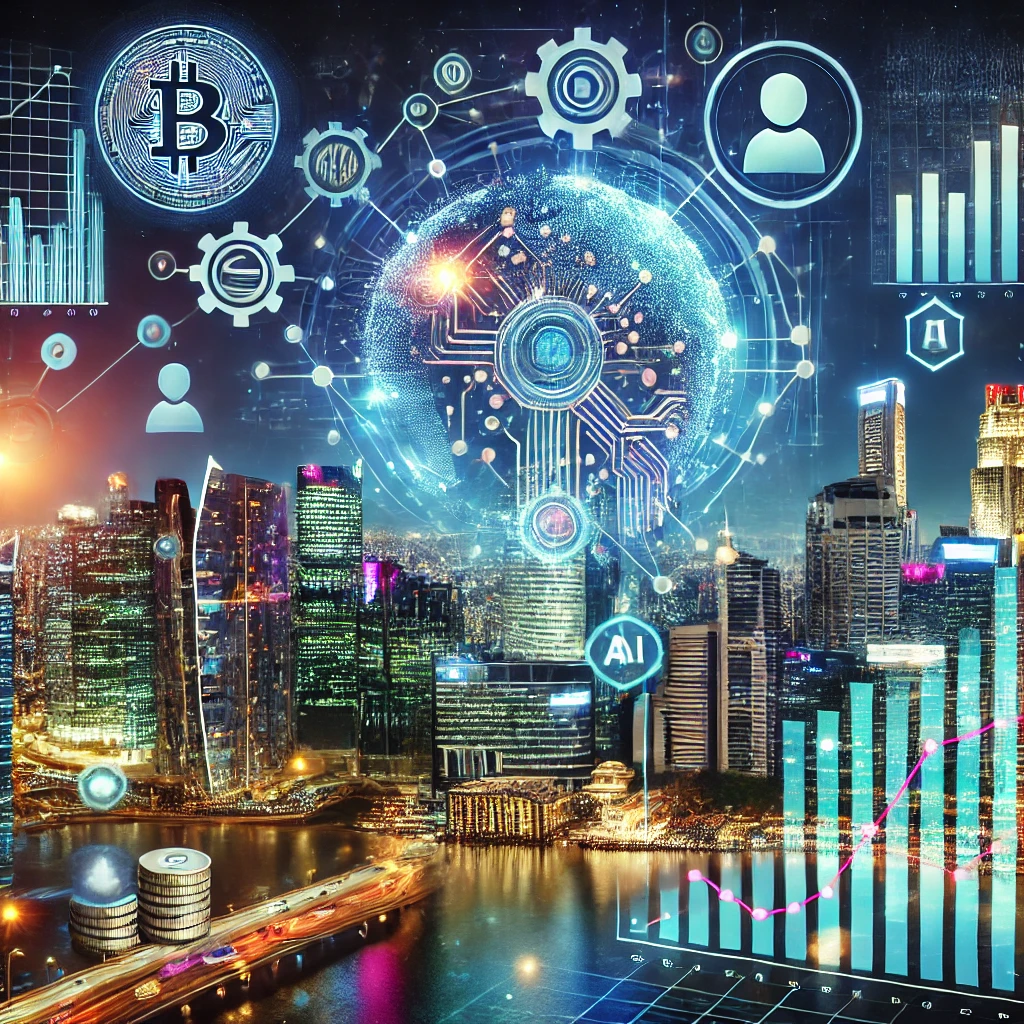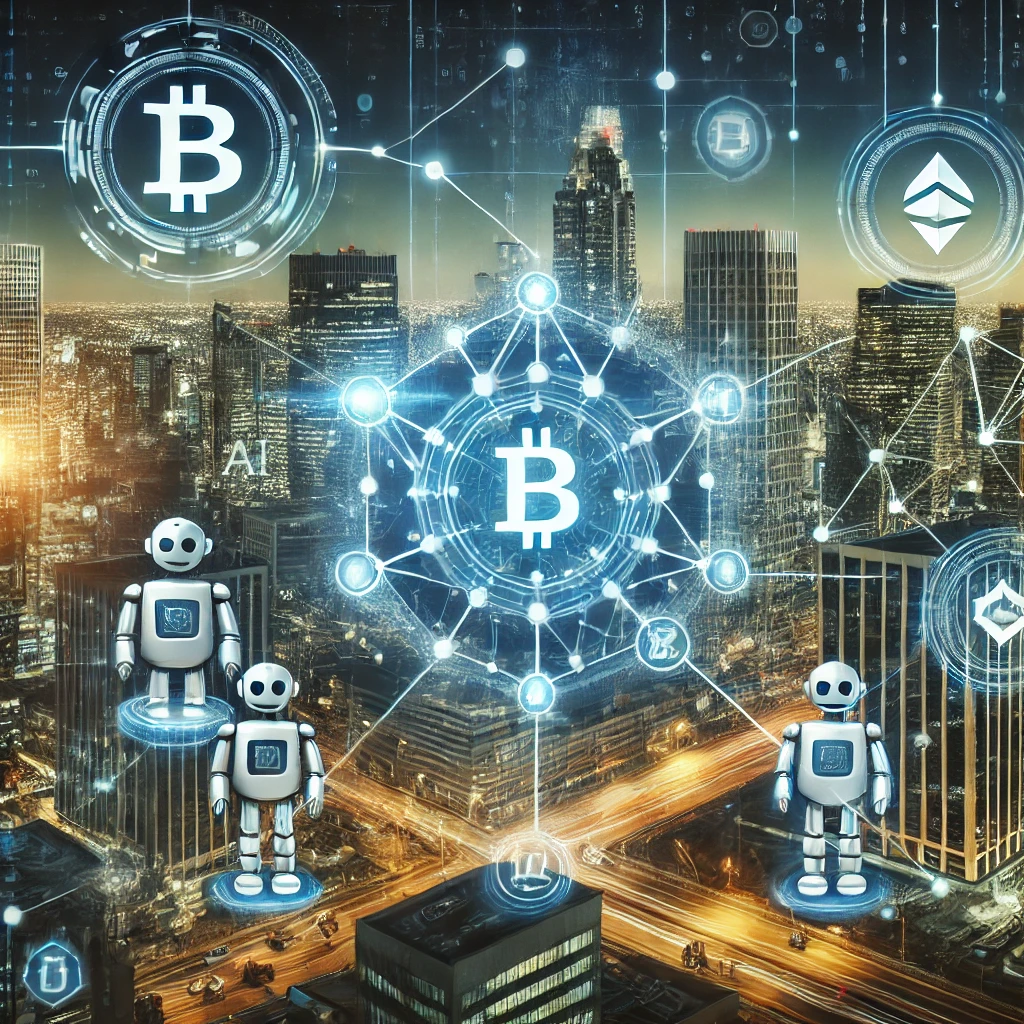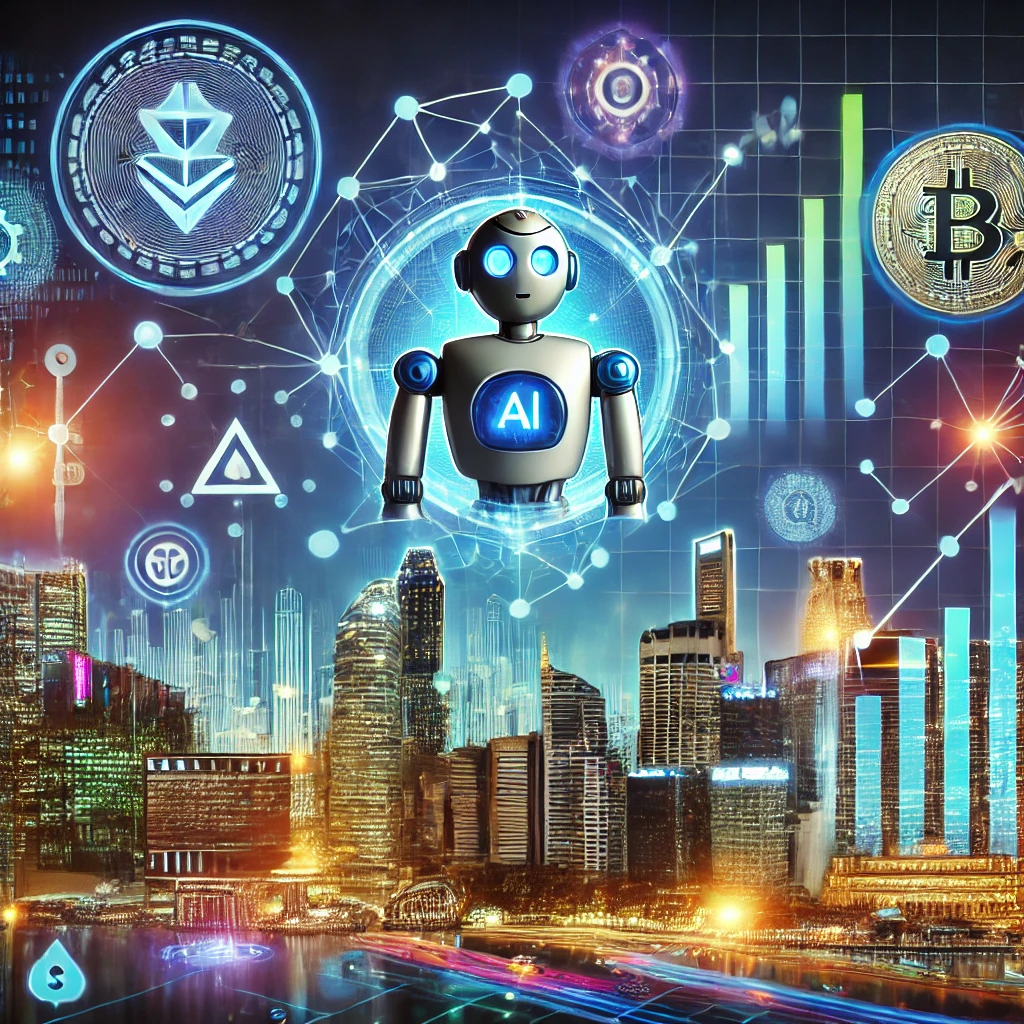
The convergence of the cryptocurrency and artificial intelligence (AI) industries is projected to add a staggering $20 trillion to global GDP by 2030, according to digital asset manager Bitwise. This groundbreaking collaboration has the potential to revolutionize multiple sectors, driving unprecedented economic growth and technological advancements. In this blog post, we explore the collaborative opportunities, infrastructure challenges, and innovative use cases emerging at the intersection of crypto and AI.
Collaborative Opportunities Between Crypto and AI
“PwC projects that AI and crypto could add $15.7 trillion and $1.8 trillion to the global economy by 2030, respectively. While that adds up to $17.5 trillion, I would not be surprised to see their synergies have a compounding effect that could drive the combined value to $20 trillion or beyond,” he stated.
– Analyst Juan Leon
The partnership between cryptocurrency and AI is expected to be transformative. Bitwise Senior Crypto Research Analyst Juan Leon highlights the emerging collaboration between bitcoin miners and AI as a prime example. Bitcoin miners possess extensive infrastructure, including storage and cooling systems and access to cheap power at scale, which can be repurposed to support AI’s vast computational needs. This synergy is exemplified by AI cloud provider CoreWeave’s acquisition of bitcoin miner Core Scientific for $1.6 billion. This deal allows CoreWeave to leverage Core Scientific’s data centers to host AI-related services, providing a pathway for bitcoin miners to diversify their business models and maximize cash flow while maintaining exposure to bitcoin’s potential upside.
Blockchain’s Role in AI Development

- Blockchain ensures the integrity and security of data used in AI training and operations.
- Use of blockchain for secure and transparent data provenance, ensuring AI models are trained on verified datasets.
- Development of decentralized networks for AI model training and deployment, leveraging blockchain technology.
- Benefits of decentralized AI networks include enhanced security, reduced risk of single points of failure, and increased collaboration.
- Tokenizing AI services and intellectual property to create new business models and revenue streams.
- Examples of platforms offering tokenized AI services and their impact on the industry.
Infrastructure Challenges and Solutions
- Data Center Shortages:
- The AI boom has created an unprecedented shortage of data centers, AI chips, and access to electricity.
- More than 80% of data center capacity under construction is leased in advance, leading to a supply-demand mismatch.
- Investment in New Data Centers:
- The world’s four largest cloud companies—Amazon, Google, Meta, and Microsoft—are expected to spend nearly $200 billion on new data centers next year to address this shortage.
- Bitcoin Miners’ Infrastructure:
- Application-specific integrated circuits (ASICs) used in bitcoin mining are not suitable for AI, but the associated infrastructure can support AI’s computational and storage needs.
- Bitcoin mining companies are exploring diversification opportunities to utilize their existing infrastructure for AI applications.
Future Prospects and Predictions
The future prospects for the convergence of cryptocurrency and AI are highly promising, with potential technological advancements poised to revolutionize various industries. We can expect significant breakthroughs in AI and blockchain technologies, leading to more efficient, secure, and scalable solutions. As these technologies evolve, the regulatory landscape will also develop, impacting their adoption and integration. Balanced regulations will be essential to foster innovation while ensuring security and compliance. In the long term, the seamless integration of AI and blockchain into everyday life could transform societal and economic structures, creating a more efficient and transparent global economy. Staying informed and engaged with these developments will be crucial for stakeholders to capitalize on the opportunities presented by this groundbreaking convergence.
Blockchain-based Validation and Emerging Use Cases
| Use Case | Description | Example |
| Deep Fake Prevention | Utilizing blockchain to verify the authenticity of digital content and counter AI-generated deep fakes. | Attestiv creates digital fingerprints for videos based on metadata and stores them on a public blockchain to verify authenticity. |
| Virtual Assistants and Smart Contracts | Integrating AI assistants with smart contracts and digital currencies to streamline transactions and enhance productivity. | Pairing AI assistants with smart contracts and bitcoin or stablecoins to enable secure, efficient transactions without centralized oversight. |
| AI-focused Blockchain Projects | Developing new blockchain platforms designed to support AI applications and innovations. | Ankr’s AI-focused Layer 1 blockchain Neura, supported by the ANKR token, aims to integrate AI and blockchain technology. |
Ethical and Social Considerations
- Addressing bias in AI algorithms and ensuring fairness in decision-making processes.
- Role of blockchain in enhancing transparency and accountability in AI systems.
- Ensuring privacy and data ownership in AI applications through blockchain-based solutions.
- Balancing the need for data sharing with privacy concerns using technologies like zero-knowledge proofs.
- Evaluating the environmental impact of combined AI and blockchain technologies.
- Efforts to develop energy-efficient solutions and sustainable practices in both industries.
Economic Impact

The projected economic growth from the convergence of cryptocurrency and AI is substantial, with Bitwise estimating an addition of $20 trillion to global GDP by 2030. This remarkable increase is driven by the transformative potential of these technologies across various sectors. Key industries such as finance, healthcare, supply chain, and logistics are expected to benefit significantly, with enhanced efficiencies, transparency, and innovative solutions. This convergence is also poised to create new job opportunities and demand for skills in AI, blockchain, and their combined applications. Educational and training programs will be crucial in preparing the workforce for these emerging roles. Additionally, global investment trends indicate a surge in funding for startups and projects at this intersection, with venture capital and institutional interest driving innovation and economic growth.
Conclusion
The integration of cryptocurrency and AI presents a transformative opportunity for global economic growth and technological innovation. The collaborative potential between Bitcoin miners and AI, coupled with solutions to infrastructure challenges and innovative blockchain-based validation methods, highlights the promising future of this intersection. As the crypto and AI industries continue to evolve, their combined impact on various sectors will likely be profound, driving significant advancements and economic benefits.
Keypoints
- The convergence of crypto and AI could add $20 trillion to global GDP by 2030.
- Bitcoin miners and AI are forming synergistic partnerships, leveraging existing infrastructure for AI applications.
- The AI boom has created data center shortages, prompting major investments in new facilities.
- Blockchain technology is being used to counter AI-generated deep fakes and enhance virtual assistant capabilities.
- Innovative projects like Ankr’s Neura are integrating AI and blockchain to support new applications and use cases.
References
- Bitwise: $20 trillion market, long-term opportunities for AI+Crypto | Bee.com. (n.d.). Bee.com. https://www.bee.com/12425.html
- Crypto and AI could add $20 trillion to global GDP by 2030 — Blockchair News. (n.d.). https://blockchair.com/news/crypto-and-ai-could-add-20-trillion-to-global-gdp-by-2030–90b5da354b
